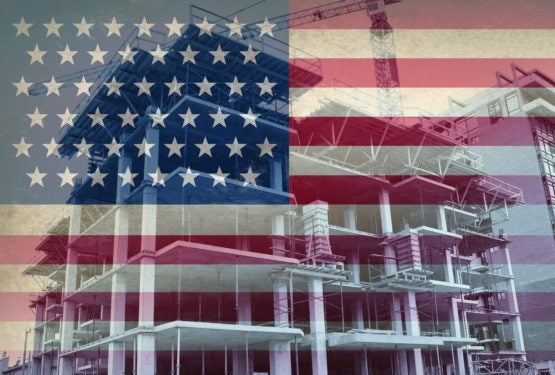Growth-minded reforms could jumpstart U.S. economy, Stanford economist says
Professor John B. Taylor says that lower tax rates on people and businesses, regulatory reforms, free trade agreements that open markets, and entitlement and monetary reforms could give a much-needed boost to the U.S. economy.

Stanford economist John Taylor suggests the U.S. economy could benefit from growth-minded policy reforms. (Image credit: wildpixel / Getty Images)
Improving the U.S. economy depends on adopting policy reforms clearly aimed at spurring growth both quickly and over the long run, a Stanford scholar says.
But U.S. policymakers have not seriously considered pro-growth policies, wrote John Taylor, the George P. Shultz Senior Fellow in Economics at the Hoover Institution, in a new working paper. Those ideas include tax reform to lower tax rates and spur hiring; regulatory reform to scale back costly regulations; new free-trade agreements; entitlement reform to stop the debt explosion; and monetary normalization to reduce uncertainty.
As Taylor pointed out, the U.S. productivity growth rate has been negative for three consecutive quarters in a row and was -.4 percent over the past year. Non-farm business sector labor productivity decreased at a .5 percent annual rate during the second quarter of 2016, according to a recent report from the U.S. Bureau of Labor Statistics.
Such trends, Taylor said, seem to portend a period of declining income growth and lower standards of living, “yet there is little public discussion of what to do about it.” He suggests that economists and policymakers need to look at the empirical record and see what growth measures work well and what does not.
Lower growth not inevitable
Taylor noted that productivity growth fell in the 1970s and then picked up in the 1980s and 1990s. What caused the economy to pick up again in the 1980s and 1990s were changes in economic policy that targeted growth, he said.
More permanent reforms today would likely have both large short-run and long-run effects on economic growth, he said.
“The unusual recent swing down in labor productivity growth, along with the unusually low contribution from capital services, suggests that it could turn up again if boosted by reform-induced incentives. Similarly, the large drop in labor force participation, along with evidence that it is not all demographics, suggests that it too would revert with reforms,” Taylor wrote in the paper.
As a result, policy reforms would not only hike the long-run growth rate of the economy, they would also likely boost growth in the short run – similar to how growth surges at first when the economy is in recovery from a recession before settling into an expansionary mode, according to Taylor, also a senior fellow at the Stanford Institute for Economic Policy Research.
“Since the economy missed that surge in this recovery, in effect we would be restarting the recovery all over again,” he wrote.
He points out that some say that policy reforms such as tax reform, regulatory reform, budget reform, or monetary reform will not work because the stagnation is “secular,” and the U.S. is now in a new era of “permanently lower growth.”
But Taylor disagrees, saying that history and basic economic theory do offer evidence that such reforms can lead to heightened economic growth.
Public discussion, debate
What is needed is a robust “public discussion” that analyzes proposed policy reforms for how well they would generate more productivity. Such dialogue needs to include “a clear explanation of why any proposed reform will, in fact, raise productivity growth,” said Taylor.
The U.S. economy, he said, is in a situation where the right policy changes can help America avoid risks and increase growth in the years ahead.
“Because the economy has grown from the start of this recovery at a pace no greater than the pre-recession trend, it has left a gap of unrealized potential that can and should be closed with faster economic growth,” he said.
In essence, Taylor said, the U.S. economy resembles an economy at the bottom of a recession – “ready for a restart” – even though the unemployment rate is near 5 percent.
